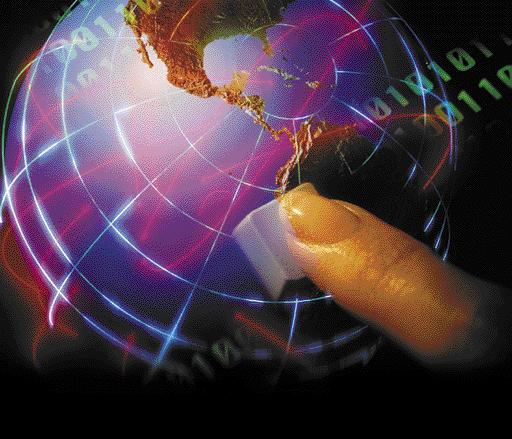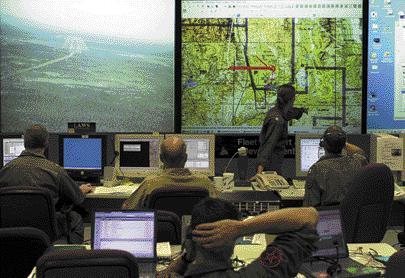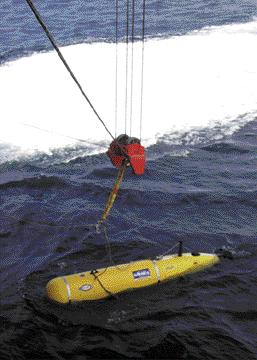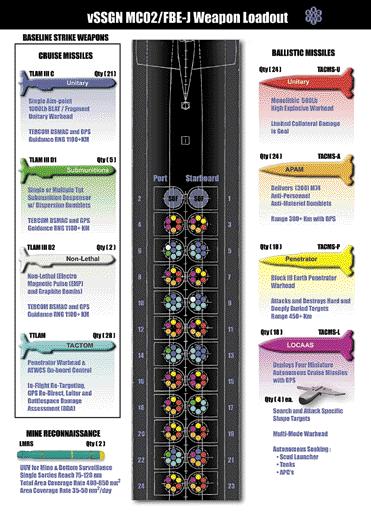
16 minute read
Experimentation: The Key to Transformation
E X P E R I M E N TA E X P E R I M E N TA T I O N T I O N : : by Floyd D. Kennedy, Jr.THE KEY TO TRANSFORMATION THE KEY TO
Secretary of Defense Donald Rumsfeld views experimentation as a means to transform the U.S. military into an effective fighting force for the 21st century, and United States Joint Forces Command spends hundreds of millions of dollars each year on it. Additionally, each service spends tens of millions annually on service experiments. VADM John Gro s s e n b a c h e r, Commander, Na val Submarine Fo rc e s (COMNAVSUBFOR), has declared experimentation to be a n e c e s s a ry cost of doing business in today’s armed forces. W h a t is experimentation, and is it something new? What is its scope?
Advertisement
Many will argue that experimentation is nothing new for the military. And it’s not, if we define it simply as coming up with new ideas and seeing if they work. Probably the best naval examples of this are the Naval War College war games focused on defeating the Japanese Navy and the Marine Corps development of amphibious doctrine, both accomplished between the World Wars. What is new are the efforts being made to institutionalize an experimentation process, DoD-wide, to keep coming up with new ideas and testing them, and making that process a prerequisite to resource allocation.
The least appreciated aspect of today’s experimentation is its scope. That scope is, in a word, comprehensive. It extends from the here and now of tactical development and evaluation (TAC D&E) to the there and then of what used to be called the Revolution in Military Affairs (RMA), so far into the future that nothing is sacred. TAC D&E takes existing or prototype systems and tests concepts for better applying them to today’s warfighting challenges. The RMA takes technologically feasible capabilities and tests concepts for applying them to tomorrow’s projected challenges. The first is the practical application of today’s capabilities to refine both their performance and our ability to employ them. The second borders on science fiction, and facilitates our thinking on what we want to be able to do 20, 30, or even 50 years into the future. Most experimentation lies somewhere between these two extremes, focused five to 15 years into the future, on systems that are prototypes; systems that are programmed but not yet available; or systems that are planned – plus the operational concepts to employ them in the nation’s interests.
Why Experiment?
We experiment to learn. And we learn to transform the force from what it has been, to what it needs to be for the 21st century. If we don’t learn, the experiment is a failure. Often, the imperative to “conduct an experiment” can be so overwhelming that the objective becomes simply having an experimental event. Conducting such an event is not worth the resources expended if we don’t learn from it. And, paradoxically, we often learn the most from a failure.
Failure is easier to accept when we’re examining concepts, as opposed to production systems that have enormous resources already sunk into their development. That’s the whole point behind experimentation: we learn through a series of experiments what we really want to do; how generally we should do it; what specific technologies should be operationalized to help us do it; how those technologies should be packaged into systems; how those systems should be operated to maximize their capabilities; and how those capabilities should be integrated with others of the same or different services, or even coalition partners. Experimentation therefore feeds requirements at eve ry step of the pro c e s s . Pro d u c t i o n systems will have a minimal probability of failure if they’ve survived rigorous experimentation throughout their development. Conversely, if we wait to experiment with systems until they’re almost ready for fleet introduction, the incentive to distort results to avoid system “f a i l u re” can be
high. We need to prevent that, and we do it by experimenting throughout a system’s development.
Secondary benefits of Submarine Force experimentation include demonstrating to others what undersea systems can do for the joint force, teaching ourselves about the context within which we do what we do (i.e. the greater naval and joint worlds), and influencing the course of future joint operations. But these are secondary to our focus on testing, refining, and winnowing our undersea warf a re concepts, and learning from that process.
Concepts
The experimentation process requires a vehicle on which to focus assessment. In most cases, that will be a concept of some kind. There are operational concepts that are “big picture” and tell generally how we would like to approach a problem (e.g., how undersea platforms can contribute to joint fires). At the other end of the spectrum, there are system concepts that tell in as much detail as possible what kind of package we’d like to have to solve a specific problem (e.g., a mine-hunting UUV for in-stride mine countermeasures, which communicates in real time and can attach explosive devices to mine-like objects that it detects). In between there are concepts of operations (CONOPS – sometimes called concepts of employment) that tell how specific systems would contribute to solving a problem identified in an operational concept (e.g., the SSGN CONOPS). All three examples exist, and the Submarine Force has assessed them in experimentation venues.
Concepts should always be “w o rk s - i n - progress.” They’re never finished. Elements of concepts can be accepted and institutionalized as tactics, techniques, and procedures (TTP), doctrine, or requirements, but the concept itself must remain free to evolve t h rough the experimentation process to ensure continued improvement in overall force capability.
The overarching operational concept that should inform all others belongs to Joint Forces Command. Entitled “Rapid Decisive Operations,” it has several subordinate functional warfighting (operational) concepts on a s s u red access, joint intelligence/surve i ll a n c e / reconnaissance (JISR), information operations, and the common relevant operational picture (CROP).
The Navy Wa rf a re De ve l o p m e n t Command (NWDC) has a Concepts De p a rtment, the products of which are a vailable at h t t p : / / w w w. n wd c . n a v y. m i l / C o n c e p t s / C o n c e p t s . a s p. Their capstone concept is Ne t w o rk Centric Op e r a t i o n s , with supporting “integrating” (operational) concepts for assured access, effects-based operations, forward sea-based forces, and information and knowledge advantage.
Within the Submarine Force, we are in the process of developing and refining concepts for undersea platforms to contribute to the operational concepts of both JFCOM and NWDC. Of course, we’re also constantly d e veloping system and employment concepts to enhance undersea platform capabilities across the board; our SUBTECH process and Payloads and Sensors effort are two prime sources for such concepts. Our two c u r rent operational concepts are “Su b - marines in Joint Access” and “Submarines in Joint Fires.”


Venues
Places we can do our concept testing, refining, and winnowing are as varied as the concepts themselves. For operational (big picture) concepts, war games such as each service’s “ Title 10” games provide the most appropriate venue. These games are designed to help the individual services fulfill their Title 10 responsibilities of organizing, training, and equipping their forces for e m p l oyment by Unified Commanders a round the world. For CONOPS in which we have a piece of hardware, whether a prototype system or another system that’s emulating the one we want to examine, the Fleet Ba t t l e Experiments run by NWDC’s Maritime Battle Center may be the most appropriate venue. For system concepts, where we want to focus on a prototype to ensure it works as advertised, a limited objective experiment tailored to that system and its immediate operating environment will probably enable us to learn the most.
We can create our own Submarine Force venues or ride along on the venues of others. Those we create ourselves are seve re l y limited by the resources it takes to plan and execute them, so are typically minor events like a seminar or seminar war game in preparation for another organization’s major event. And there are plenty of other events from which to choose. The Army, Navy, and Air Force all sponsor “Title 10” war games in which future concepts are assessed for their respective services. The three services also put on major and limited-objective experiments. Joint Forces Command’s J9 Experimentation Directorate sponsors both major events (like this year’s Millennium Challenge 02) and minor experiments.
All these venues provide the Submarine Force, and the Undersea Experimentation Wo rking Group that monitors potential venues, with the opportunity to test our concepts. The trick is to identify well in a d va n c e those venues that provide us with the best opportunity to learn from testing our ideas, then to engage the planners of those venues to ensure our experimentation objectives can
(top) Insi de the Integrated
Battlespace Arena (IBAR), Michelson Laboratory, China Lake, California, warfighters keep a close eye on scre e ns showing a real-time picture of theater air assets and a live feed from a Predator surveillance aircraft on July 30 2002, during Millennium Challenge ‘02.
(bottom) The U.S. Third
Fleet Command Ship, USS Coronado (AGF-11) embarked
U.S. Air Force GEN Richard
Myers, Chairman of the Joint Chiefs of Staff (left), and members of his staff during the Joint Military
Experiment, Millennium Challenge ‘02 in San Diego, California. Coronado provi ded the headquarters for the command of maritime and joint forces during the experiment.

Results
O ver the past three years, we have examined the scenarios, force structures, and command and control architectures of projected venues and identified several within which we could examine elements of our operational concepts on “Submarines in Joint Fi re s” and “Submarines in Jo i n t
A Battlespace Preparation Autonomous Underwater Vehicle (BPAUV) is being lowered into the waters of coastal California from the deck of the High Speed Vessel Joint Venture (HSV-X1) during Millenium Challenge ‘02.
Access.” In addition, NWDC identified several initiatives involving undersea platforms that it wanted to examine in its Fleet Battle Experiments (FBEs) and Limited Objective Experiments.
Fleet Battle Experiments
Though NWDC evaluated some new prototype systems onboard submarines and emerging developments in network connectivity in FBE-Echo and again in FBEFoxtrot, the submarine community’s first focused exploration of one of our operational concepts took place in FBE-Go l f (April, 2000). For FBE-G, we examined two initiatives that we drew from our concept of Submarines in Joint Fires: Guided Missile Submarine(s) in Joint Fi res, and SEAL (Sensor) to SSN (Shooter) Execution. Realworld events precluded live-forces play in the Mediterranean, so we focused on a combination of CONUS live play and a virtual submarine that we established at Na va l Undersea Wa rf a re Center (NUWC) New p o rt . This combination allowed us to examine the connectivity, information, and internal-tot h e - p re s s u re-hull pro c e d u res necessary to conduct mutually-supportive tasks between SEALs ashore and submerged submarines, as well as to validate several procedures for submarine participation in pre-planned fires executed via an air tasking order. Many of the insights we gained from these efforts have been incorporated within our concepts of operation in support of the war on terror.
For FBE-Hotel, conducted under Commander Second Fleet auspices in August and September 2000, we focused on an initiative examining the plausibility and utility of a Theater ASW Commander, and reachback from a forward-deployed battle group to the Theater ASW Commander’s headquarters at CTF-84. We determined that both a Theater ASW Commander executing an offensive ASW campaign, and integrating that campaign with the defensive ASW requirements of a carrier battle group commander through reachback capabilities can be highly desirable, and are quite feasible. We’re following up on those findings with a more detailed initiative in FBE-Juliet, ongoing in the Pacific as this is being written.
NWDC executed FBE-India in May and June of 2001 in coordination with Commander 3rd Fleet. For this event we stood up a virtual SSGN (vSSGN) at NUWC, and operated it as an integral element of the live forces participating in the Pacific. LCDR Erik Burian’s article in the Winter/Spring 2002 issue of UNDERSEA WARFARE documents the vSSGN’s performance during this FBE.
As mentioned above, FBE-Juliet is at this writing underway in the Pacific. We have n u m e rous initiatives within this FBE including submarine fires from both the vSSGN and an SSN emulating an SSGN in the Southern California OPAREA – see the vSSGN Weapon Loadout on page 7. More will be reported on this FBE in a future issue of UNDERSEA WARFARE.
Global War Games
Since 1978, the Naval War College has conducted an annual war game to examine operational and strategic concepts for employment of future naval forces. This “Global War Game” is conducted for the expressed purpose of helping the Department of the Navy execute its Title 10 responsibilities for organizing, training, and equipping Navy and Marine Corps forces for employment by Unified Commanders. Since 1978, the other service departments have also initiated war games for the same purpose. Collective l y, these games are known as Title 10 war games.
In Global 00, we participated to a limited extent, focusing on ASW issues. For Global 01, we made a major commitment to both the Global operational game and an overlaid technology “Innovation Game,” focusing on a variety of undersea warfare issues, including the undersea component of NWDC’s expeditionary sensor grid concept, SSGNs in land attack, surface warfare, and special operations roles, and SSNs in mine warfare, ISR, and ASW roles. Global 01’s Southwest Asia scenario provided a promising environment for examining our initiatives.
During Global 01’s pre-hostilities phase, submarines clandestinely deployed an extensive netted undersea array that formed an essential component of NWDC’s concept for an expeditionary sensor grid (ESG). This ESG, combined with an aggressive tagging program, kept the littoral ASW problem under control; the ESG also prov i d e d warning and localization data against the swarming small craft threat posed by Red. A Vi r g i n i a-class dedicated ISR variant was integrated directly into the ESG and provided tremendous capability in support of the ESG as a whole. Global’s concept for employment of undersea assets within the context of an ESG stimulated a great deal of innovative thinking among the operational game players, and among the Innovation Game participants. These insights have been informing decisions made within the S U BTECH and Sensors and Pa y l o a d s efforts, as well as refining our developing concept for submarines in joint access.
Air Force Future Capabilities Game
The Air Force’s Title 10 game alternates years between a Future Capabilities Game that looks 20 years in the future, and a Global Engagement Game that looks out ten years. Future Capabilities Game 2001 (FG01) took place last De c e m b e r, and we seized the opportunity to explore initiatives from both our joint fires and joint access concepts.
Unlike the Global 2001 game, which d i d n’t pose an ove rwhelming anti-access problem, FG01 looked at the access-denial capabilities of a major peer competitor (Red) in the year 2020. Since Red’s strategy was to execute a quick, punitive action against a neighbor with close ties to the United States,
Blue’s principal measures of effectiveness became rapidly closing and ove rc o m i n g Red’s anti-access capabilities, and then supporting our ally’s expulsion of Red forces.
Given the robust anti-access capabilities of Red, and the requirement to flow landbased forces, force-protection assets, and the associated logistics tail over great distances, we were able to examine thoroughly the access-enabling potential of submarines in multiple roles. Both SSNs and SSGNs operated well inside the Red integrated air defense system (IADS) and coastal defense cruise missile perimeters on ISR and SOF delivery missions. In addition, the SSGN, armed with a payload of various future weapons and sensors, stimulated (with decoys), suppressed (with jammers), and destroyed (with tactical ballistic missiles) elements of Red’s IADS, creating attack corridors deep within Red’s homeland for both manned and unmanned systems. This joint suppression of enemy air defense (JSEAD) was followed by SSGN-launched cruise missile strikes, as well as Navy and Air Force tactical aircraft strikes. Another payload employed on SSGN was a company-sized SOF unit that was used to execute a campaign to neutralize Red forces in an island group. We will explore further the contributions of various payloads in upcoming events to determine the best investments for scarce resources.
The Future
The coordinating agency for Submarine Force concept development and experimentation is the Undersea Ex p e r i m e n t a t i o n Working Group (UEWG), co-chaired by re p re s e n t a t i ves of Commander Na va l Submarine Fo rces and the Di rector of Submarine Warfare. Members of the group include re p re s e n t a t i ves from SUBLA N T, SUBPAC, NAVSEA, NUWC, and NWDC. The group meets quarterly, or more frequently as circumstances dictate, to discuss concept development, identify appropriate venues for experimentation, and re v i ew what we’ve learned from recent experiment ation. It re p o rts to the COMNAV S U B F O R Chief of Staff and CNO N775.
The UEWG ’s near-term priority is refining operational concepts for submarine contributions to joint access and joint fires. Concepts of operations within these higherlevel constructs include joint suppression of enemy air defenses (JSEAD), clandestine intelligence, surveillance, re c o n n a i s s a n c e , and targeting (ISRT), mine reconnaissance and neutralization, littoral anti-surf a c e w a rf a re (ASUW), theater anti-submarine warfare, battlefield interdiction, and on-call f i res. System concepts being explore d include SSGN with payloads for JSEAD, interdiction fires, and littoral ASUW, and Vi r g i n i a-class variants with off-board systems for mine countermeasures, ASW, ISRT, and onboard payloads for interdiction fires and littoral ASUW.
Projected venues in which we’ll examine these concepts over the next year include A r m y, Air Fo rce, Na v y, and Sp e c i a l Operations Command war games, Fl e e t Battle Experiments, the Air Force’s Joint Ex p e d i t i o n a ry Fo rce Experiment, and NWDC limited-objective experiments. As this issue closes for press, we’re alre a d y preparing for FBE-Kilo to be executed in Spring 2003, and the Air Force’s Global Engagement VI war game, to be executed in November of this year. We’ll report periodically in the pages of this journal on the results of these and other efforts.
Floyd D. (Ken) Kennedy, Jr. is the Center for Naval Analyses representative on the staff of Commander Naval Subma r i ne Forces (N02EG). He served as CNA representative on the staffs of CINCUSACOM ( j o i nt int e ro p e rability) and Comma nder Na v a l Doctrine Command (concept development) prior to joining the SUBLANT staff in 1999. He retired from the Naval Reserve in 1999 after 30 years of active and reserve service.








